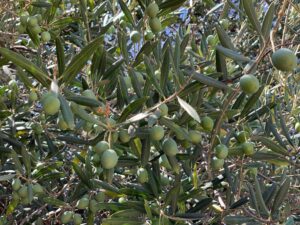The U.S. Drought Monitor reported mostly dry weather this week across the Great Plains, Minnesota, and Wisconsin, the south-central U.S. and the Southwest. Parts of the Northwest received moderate to heavy precipitation amounts, with northern California northward into the Pacific Northwest receiving amounts locally over 3 inches.
Reports of locally higher precipitation amounts fell in the Northeast and in portions of the Great Lakes region, including heavy lake-effect snow in north-central and northwest Indiana.
Midwest
The Midwest received varied precipitation. Lake-effect snow fell in heavier amounts in northern Indiana, northeast Illinois, southwest Lower Michigan, and portions of the Upper Peninsula of Michigan, while half an inch of precipitation fell across much of Ohio and central and eastern Kentucky.
Heavier precipitation amounts in north-central Ohio led to improvements where streamflow and short-term precipitation deficits improved. In addition, heavy snowfall in northwest Indiana and northeast Illinois led to improvement in soil moisture as well as reductions in precipitation deficits and drought conditions. In east-central Illinois, severe and extreme drought expanded where streamflow levels dropped.
Temperatures were variable across the region, but most areas were within 4 degrees of normal.
Phil Krieg, agronomy service representative for Syngenta Crop Protection in Illinois, shared that his week started off dry with great harvest conditions.
“On Nov. 8, a cold front moved in with strong and gusty winds along with cold temperatures, giving us the first hard freeze of the season on Nov. 9,” Krieg said.
Short-term precipitation deficits grew in south-central and southwest Wisconsin, leading to an expansion of abnormal dryness and moderate drought. Moderate drought also expanded in the northern Lower Peninsula of Michigan, where short-term precipitation deficits grew alongside declining soil moisture levels. Moderate drought expanded in a few spots in southeast Missouri, where recent dry weather added to short-term precipitation deficits.
In Minnesota, Tim Dahl, agronomic service representative for Syngenta Crop Protection, shared that last week the weather started off dry and warm but turned colder by the end of the week.
“It’s fall in Minnesota,” Dahl said. “From here on out, every warm sunny day is a nice bonus.”
High Plains
In the High Plains, some precipitation fell from central South Dakota to northeast Nebraska, and precipitation exceeding a half inch also fell in northwest Wyoming.
However, mostly dry weather was the rule across the High Plains. Short-term precipitation deficits grew in parts of eastern Nebraska where abnormal dryness expanded in coverage north and northwest of Lincoln. Portions of western Nebraska and adjacent southeast Wyoming and Colorado continued to have abnormal dryness and some moderate drought grew in these areas.
The eastern edge of the High Plains area had temperatures that remained mostly within a couple degrees of normal. However, most of the region was warmer than normal, especially western Nebraska and central and western portions of Colorado and Wyoming, where temperatures were 4–8 degrees above normal.
“Nebraska experienced ideal harvesting conditions,” said Travis Gustafson, Agronomic Service Representative for Syngenta Crop Protection. “Highs in the 60s, dry, and not much wind.”


:max_bytes(150000):strip_icc()/CombineHarvestingSoybeans-MediumShot-1-2000-3c4824481cd24341a1466a26271affbd.jpg)
:max_bytes(150000):strip_icc()/biomade2-2048x1536-d54c7ddb16994ba0b55a747168e5d949.jpg)




:max_bytes(150000):strip_icc()/Elsingfarmtractor-JessiSchoville-6ae176703224437bb7e9f51fa086216e.jpeg)
:max_bytes(150000):strip_icc()/10637312626_f9a2afa7b9_o-59de0aca0b374820973869aa10a158e2.jpg)
:max_bytes(150000):strip_icc()/BloombergContributor-2245873075-6175e04a34c4400fa699ba18ba0e2681.jpg)
:max_bytes(150000):strip_icc()/25547soybeans_soybeans-e656ee222fe341899050fb39e7a1cffe.jpg)